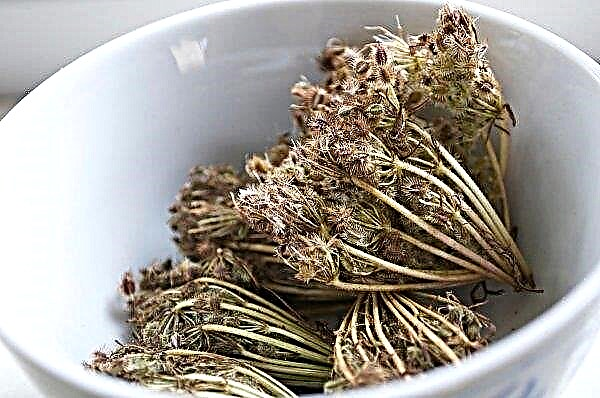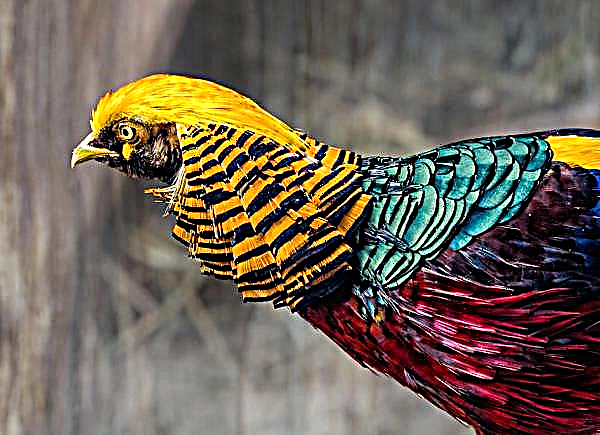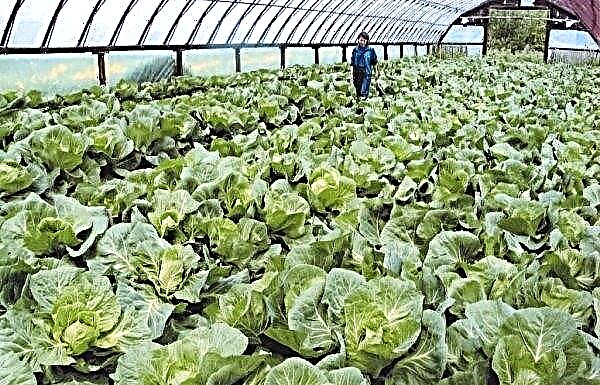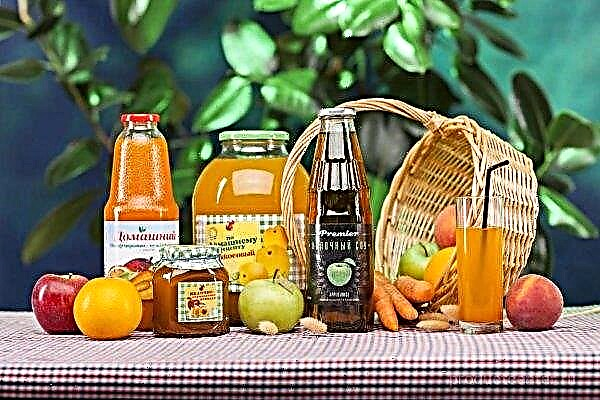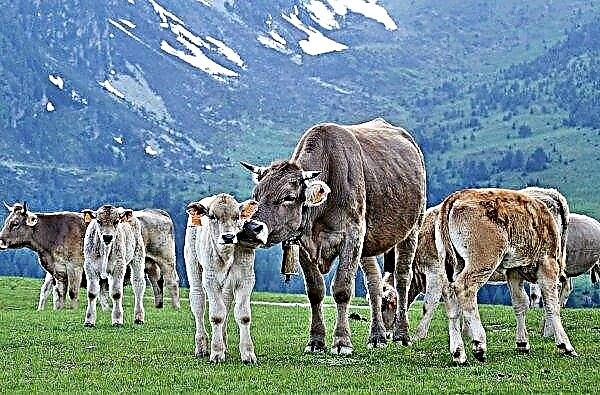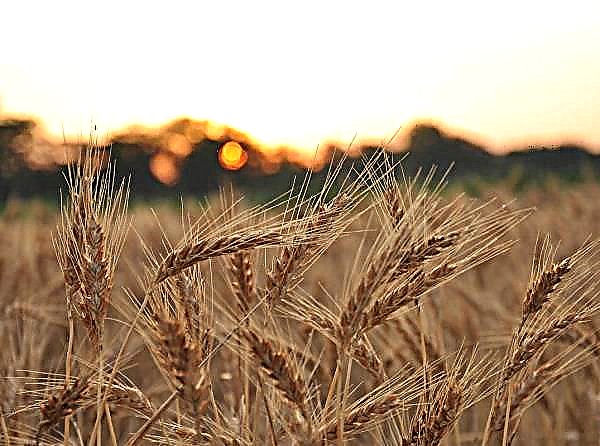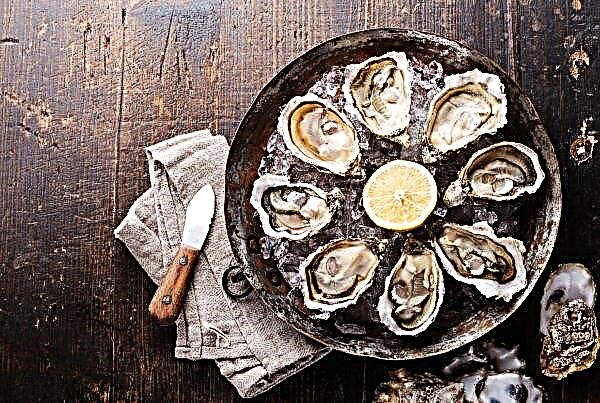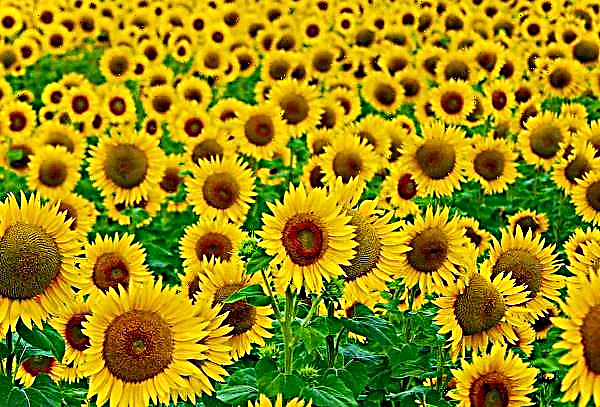Marek's disease is one of the common ailments among poultry, but ordinary hens and broilers suffer the most from it. Knowing how to recognize the symptoms in time, withstand quarantine, protect the livestock from death, you can protect yourself from large financial losses. The efforts spent on breeding are reduced to nothing due to the simple neglect of recommendations and non-compliance with preventive measures.
What is this disease?
Marek's disease is viral in nature, affects the tissues of internal organs and the functioning of the feathered nervous system. There are three forms of the disease:
There are three forms of the disease:
- Visceral - tumor growths on the internal tissues.
- Ocular (ocular) - partial loss of vision or complete blindness.
- Neural - consequences with paralysis and paresis in severe course.
The causative agent of Marek's disease
The causative agent of Marek's disease is the Herpes virus. The infection is high, infected chickens do not spread the infection through the external environment immediately, but 7–20 days after the virus enters their body. One individual can be a carrier from six months to two years, in some cases, a lifetime. But with the recovery of the chicken, it acquires a lifelong immunity, which it transfers to its offspring.
Did you know? There is no way to protect and prevent Marek's disease more effectively than timely vaccination.
Viral characteristics of the pathogen:
- good adaptability to environmental conditions, at a temperature of +25 ° C it can be pathogenic for five months, preserved in litter, eggs, excrement;
- affects at the cellular level.

Sources and routes of infection
The transmission and infection route is airborne. Insects: flies and ticks are especially dangerous as carriers of insects. An infected bird that exhales the virus also serves as a source of the epidemic. The virus spreads very quickly, entering the body through the respiratory tract. A bird can be a carrier, even if it is immune to the disease. Moreover, she may not have any symptoms, she will be healthy. Therefore, to establish where it came from is not so simple.
History reference
The disease got its name in honor of the Hungarian veterinary researcher Jozsef Marek, who first described the disease in 1907. The scientist himself called it “chicken polyneuritis,” but after the disease was still left associated with the name of its discoverer. In Russia, they learned about Marek’s disease only in 1930, taking up its study. The development of a vaccine against the disease began only in 1970. Its basis is the use of active immunostimulants and virus strains for the production of antibodies in birds. Today, vaccination of young livestock is the main measure of its protection.
The development of a vaccine against the disease began only in 1970. Its basis is the use of active immunostimulants and virus strains for the production of antibodies in birds. Today, vaccination of young livestock is the main measure of its protection.
Economic damage
The rate of financial loss is quite high. Risks include:
- large rejection of chickens;
- tangible case of goals;
- costs of quarantine measures;
- spending on treatment, prevention;
- reduced hen productivity.
Symptoms and course of the disease in chickens
The symptomatology of the disease does not appear immediately - the incubation period can last from two to almost 22 weeks. Factors affecting the development of the disease:
Factors affecting the development of the disease:
- viral strain;
- the number of bacteria that entered the body of an individual;
- antibodies inherited from the mother;
- chicken age;
- immunity.
Diagnostics
Diagnosis consists of a number of symptoms, autopsy results, viral studies. The disease always comes in the form of an epidemic due to the rapid spread of infection. To confirm the diagnosis, the veterinarian sends the dead chickens to the laboratory. Accurate diagnosis requires five to ten dead individuals.
Important! It is important to have in mind the sensible veterinarian who can distinguish Marek's disease from leukemia, bird plague, Newcast's disease, poisoning and other related defects.
Pathogenesis and pathological changes
After the virus is in the lungs, it multiplies and travels through the body with blood flow. The peripheral lymphoid cells are affected, and the brain, eyes, and muscles take very strong damage. Acute Marek’s disease is more aggressive, internal organs suffer most, in the subacute type - eyes and nervous system. External changes, except those in the iris of the eye, with Marek's disease are rarely noticeable before an autopsy, after which the following pathological changes in the body are detected:
External changes, except those in the iris of the eye, with Marek's disease are rarely noticeable before an autopsy, after which the following pathological changes in the body are detected:
- thickened nerve trunks;
- tumor formations on internal organs (liver, pancreas, lungs, kidneys, ovaries, stomach);
- muscle and skin deformity;
- hemorrhage, swelling in the brain, spinal cord;
- cell accumulation around blood vessels;
- necrosis may be observed in the lens of the eye.
Forms of the course of the disease
Symptoms manifest themselves in different ways and depending on the form of the course of the disease, which has two varieties:
- Subacute (chronic, classical).
- Sharp.
Below we consider the features of the symptoms in each of them.
Subacute
A fatal outcome with a subacute type of ailment is likely no more than 30%. Damage to nerve cells, less often - to the eyes. Symptoms of subacute Marek's disease associated with NS:
Symptoms of subacute Marek's disease associated with NS:
- the chicken is limping;
- the feathered wings sagged, the tail;
- neck turned out;
- semi-paralysis (usually temporary).
- pear shape, narrow or other unnatural (not round) shape;
- weak reaction to light or lack thereof.
Sharp
This option resembles leukemia. Young stock is more susceptible to this form, as well as chicks up to 5 months old. Since during the period of 7-20 days there may be no signs of the disease, often the entire herd of birds becomes infected. The main symptoms are:
The main symptoms are:
- digestion is disturbed;
- weight is reduced;
- no appetite;
- weakness.
Quarantine and control measures
Ill chickens and roosters are isolated from healthy ones or immediately allowed for slaughter. Disinfect the house to prevent an outbreak. Chlorine, formaldehyde, phenol are suitable for this purpose. Egg incubation is possible only after the room has been treated with formaldehyde vapor four times and not earlier than a month after cleaning. There should be no litter, no litter, or even feathers or fodder from infected birds in the chicken coop.
Methods for controlling the disease:
| In normal adult chickens | Broilers |
| “Acyclovir” treatment - helps only at an early stage, before signs of paralysis appear. It does not give a 100% guarantee of protection against death, it is used as antiviral therapy. | 5–10% damage to the livestock makes treatment inappropriate for meat breeds. The bird is slaughtered, the room is being processed. To prevent the disease, broilers should be vaccinated 24 hours after hatching, with revaccination 10–20 days if necessary. |
Can I eat meat and eggs from infected birds?
Marek’s disease is completely safe for humans, so you don’t need to take any special precautions; you won’t get the virus. You can eat meat and eggs of a sick chicken if it has no signs:
- Gospel disease (jaundice);
- changes in muscle tissue (deformation);
- anemia
- noticeable internal changes.
 It is advisable to heat the meat before use for 1.5 hours. Feather and fluff can also be used after thorough disinfection.
It is advisable to heat the meat before use for 1.5 hours. Feather and fluff can also be used after thorough disinfection.Disease Chicken Vaccine
To form an immunity against Marek’s disease in chickens, vaccinate chickens even at the age of 24. Weakened herpes contained in the dosage provokes the production of antibodies to it. The drug is administered intramuscularly.
Important! After vaccinating the chickens, do not worry if they are sleepy. Keep them warm for 2 days to prevent colds during the development of immunity.
For vaccination use:
- vaccines FSBI "ARRIAH";
- strain based on turkey material;
- "Nobilis";
- "Intervet";
- products of the Kursk Biofactory and Shchelkovo Biocombine;
- Marex, Rospens, or Waxitec.

General preventive measures
In addition to vaccination, there are other preventive methods of combating the disease:
- maintaining constant cleanliness in the house and courtyard for walking chickens;
- separate keeping of adult chickens, young animals and chickens;
- purchase of young animals, chickens, hatching eggs only from trusted, reliable breeders;
- regular cleaning with disinfection of the house, yard;
- washing and disinfection of feeders, drinking bowls.
Faced with adult Marek’s disease, immediately vaccinate uninfected young individuals. Efficiency in this case will be lower than timely vaccinations, but the percentage of death will be less. Risks can always be minimized by treating farming as responsibly as possible.

